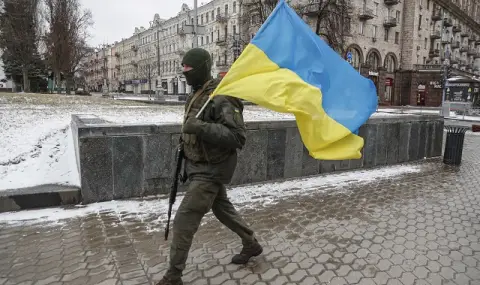Ukraine marked 1,000 days today since the start of a full-scale Russian invasion with exhausted troops fighting on many fronts, incessant drone and missile strikes on Kiev and officials preparing for Donald Trump's return to the White House in January.
In an expression of support for the besieged country, US President Joe Biden gave the “green light” of Kiev to use US missiles against targets on Russian soil, potentially limiting Moscow's ability to carry out attacks and supply its frontline troops.
However, this sea change in policy could be reversed when Trump returns to the White House in January, and military experts warn that it will not be enough on its own to change the course of the entry into the 33 it's a month of war.
Thousands of Ukrainian citizens have died, more than six million are living as refugees abroad and the population has shrunk by a quarter since Russian President Vladimir Putin ordered the land, air and sea invasion that started Europe's biggest conflict after World War II.
Military losses are catastrophic, although they remain a closely guarded secret. Public Western estimates based on intelligence vary widely, but most put the number of dead and wounded in the hundreds of thousands on both sides.
The war has blackened families in all corners of Ukraine, where war funerals are commonplace from major cities to the most remote villages, and people are exhausted by sleepless nights to the sound of air raid sirens and suffering.
Now the return of Trump, who has promised to quickly end the conflict without specifying how, calls into question the future of US military aid and a united Western front against Putin, and opens up the prospect of talks to end the war.
The prospect of negotiations triggers an escalation
With Ukraine entering an unfamiliar environment, the sense of escalation is palpable, and Moscow and Kiev are looking to improve their positions on the battlefield before any negotiations begin.
Already bolstered by Iranian strike drones and North Korean artillery shells and ballistic missiles, Russia has now deployed 11,000 North Korean troops to the frontline, some of whom Kiev says have already engaged Ukrainian forces that have seized part of Russia's Kursk region.
A senior Ukrainian representative said that Pyongyang has the ability to send Russia 100,000 troops.
Meanwhile, Ukraine has sent some of its most elite units to hold this small piece of Russian territory it seized before August as a bargaining chip.
Kiev says Russia has massed 50,000 troops there as Russian forces make their fastest advance in eastern Ukraine since 2022 and also step up pressure in the northeast and southeast of the country.
As winter sets in, Russia on Sunday renewed its airstrikes against Ukraine's energy grid, firing 120 missiles and 90 drones in its most massive airstrike since August.
In addition to US authorization to strike targets on Russian territory with American weapons, foreign financial and military aid also remains vital to Kiev.
Despite two consecutive years of moderate growth, Ukraine's economy is still at just 78 percent of its pre-invasion performance, and the country's GDP is set to shrink by a third in 2022.
Ukraine's once huge steel and grain sectors are among the hardest hit.
Russia demands that Ukraine cede territory and abandon its ambitions to join NATO
The UN human rights monitoring mission has confirmed the deaths of 11,743 Ukrainian civilians, although some Ukrainian officials believe the number of civilians killed is much higher.
Ukrainian President Volodymyr Zelensky said last week that Ukraine should do everything in its power to end the war next year through diplomatic means. However, he expressly ruled out any negotiations on a ceasefire before Ukraine receives adequate guarantees for its security.
The Kremlin has said the aims of the war remain unchanged, and Putin said in June that Ukraine must abandon its ambitions to join NATO and must withdraw from four of its areas that Russian forces partially control, which is tantamount to capitulation for Kiev.
A sea of small Ukrainian flags in tribute to the dead are now clustered at one end of Kyiv's Independence Square, once the beating heart of the massive pro-European protests that ousted Ukraine's then-pro-Russian president in 2014.
p>
Russia has responded to the protests by seizing the Crimean peninsula and backing a paramilitary separatist insurgency in eastern Ukraine that has killed 14,000 people before two rounds of so-called Minsk format talks halted clashes with Kiev's forces.
After German Chancellor Olaf Scholz called Putin on Friday for the first time in nearly two years, Zelensky said the move had eased the Russian leader's isolation. The Ukrainian president also spoke out against the idea of resuming negotiations in the Minsk format.
„We want to warn everyone: there will be no “Minsk 3”. What we need is real peace," added Zelensky.
Translation from English: Alexey Margoevski, BTA
